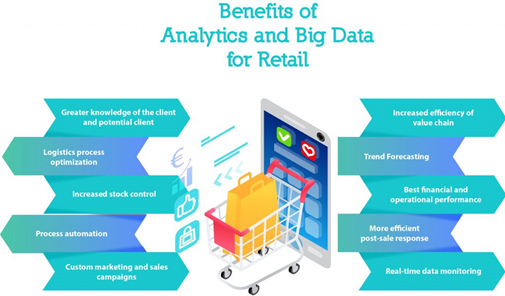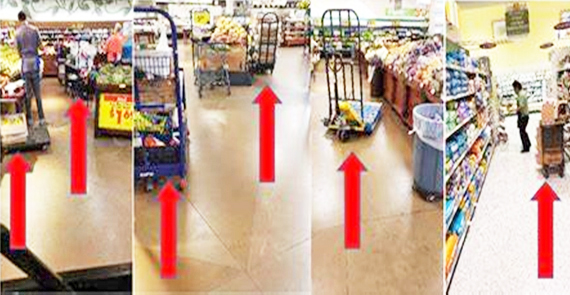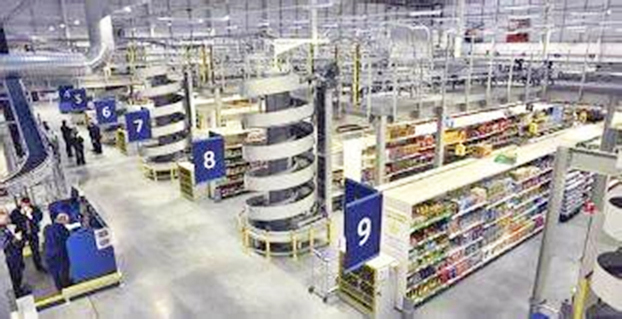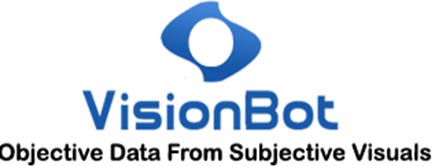
Prakash Prabhu – Chief Business Officer & Co-Founder, VisionBot
Computer Vision Driven Automated Video Content Monitoring For Retail
Augmented computer vision is a game-changer for the retail industry. By adding layers of digital information to the real world, retailers can create engaging and personalized experiences for their customers, resulting in increased sales and customer loyalty.
Computer vision is a type of technology that is revolutionizing the way that we think about retail. By using machine learning algorithms, computer vision is able to ‘see’ the world around us and make sense of it in ways that were previously impossible.
With its ability for automated visual monitoring in real-time, it provides insights into customer behaviour, shelf management, merchandising, inventory & visitor analytics to name a few, and has become an essential tool for retailers who want to understand their customers better, deliver a more personalized shopping experience and bring more efficiency in their operations.

In this editorial, we will explore some of the most promising use cases of computer vision in retail, and how they are already transforming the industry.
Smart shelves
One of the most exciting applications of computer vision in retail is the development of smart shelves. These shelves are monitored by cameras that can detect when products are running low and automatically raise an alert to reorder them. This not only saves time and resources, but it also ensures that customers always find what they are looking for.
Smart shelves can also be used to analyse customer behaviour. By tracking which products are most frequently picked up or put down, retailers can gain valuable insights into what customers are looking for and adjust their inventory accordingly. This kind of real-time data can be used to optimize product placement, pricing, and promotions.
In-store navigation
Navigating a large store can be a daunting task, especially for customers who are not familiar with the layout. Computer vision technology can help with this problem by providing real-time maps and product locators that help customers find the products they are looking for quickly and easily.
In-store navigation also offers opportunities for retailers to personalize the shopping experience. By tracking a customer’s movements through the store and analysing dwell times, retailers can make targeted recommendations about products that they might be interested in through instore promotions.
Real-time analytics
Perhaps the most significant advantage of computer vision technology in retail is its ability to provide real-time analytics. By analysing customer behaviour and preferences in real-time, retailers can make data-driven decisions about pricing, product placement, and marketing.
Computer vision can be used to collect valuable data on customer behavior such as which products they are looking at, how long they spend in the store, and which displays they interact with the most. This data can be used to make informed decisions on store layout, product placement and promotions. Retailers can also use computer vision to analyze customer demographics such as age and gender, to better tailor their products and services to their target market.
Checkout & payment
The checkout process is often a pain point for both customers and retailers. Long lines and slow checkout times can lead to frustrated customers and lost sales. Pilferages can be reduced at the self-checkout counters, by flagging suspicious transactions.
Inventory management
Managing inventory is a crucial aspect of retail operations. Computer vision can help retailers track inventory levels and identify which products are running low or out of stock. By using cameras installed in the store, computer vision algorithms can detect which products are being picked up by customers and which shelves are running low. This information can be used to automate the reordering process, ensuring that the store always has sufficient inventory levels.
Security
Security is a major concern for retailers, and computer vision can help improve safety and prevent theft. Cameras equipped with computer vision algorithms can detect suspicious behavior such as someone trying to remove a security tag or hiding a product in their bag. This information can be sent to store personnel in real-time, allowing them to take appropriate action to prevent theft.

Computer Vision Driven Automated Video Content Monitoring For Warehousing
Warehousing and logistics are essential components of the supply chain for any industry. The rapid growth of e-commerce has led to an increased demand for faster, more efficient, and cost-effective warehousing and logistics solutions. Computer vision technology is playing a significant role in transforming the industry by enhancing operational efficiency, reducing costs, and improving customer satisfaction. In this editorial, we will explore some of the key use cases of computer vision in warehousing and logistics.
Monitored picking and sorting
Picking and sorting products is a critical process in the warehousing and logistics industry. Computer vision can be used to automate this process, reducing labour costs and improving efficiency. With cameras and machine learning algorithms, computer vision can detect and identify products, sort them, and place them in the appropriate storage location. This technology can also be used to optimize the picking process by identifying the fastest route to collect items and reducing errors.
Inventory management
Inventory management is a critical aspect of warehousing and logistics. Accurate inventory management ensures that the right products are available at the right time, reducing delays and improving customer satisfaction. Computer vision can help automate inventory management by scanning barcodes or using image recognition to identify products, track their location, and monitor their quantity. This technology can also be used to optimize storage space, ensuring that products are stored in the most efficient way possible.
Quality control
Quality control is an essential aspect of the warehousing and logistics industry. Computer vision can be used to detect defects or damage to products, ensuring that only high-quality products are shipped to customers. With cameras and machine learning algorithms, computer vision can identify flaws or inconsistencies in products, and alert workers to take appropriate action. This technology can also be used to perform quality control checks on products in real-time, reducing the risk of errors and delays.
Inbound & outbound inventory tracking
Shipment tracking is an essential part of logistics operations. Customers expect to be able to track their shipments in real-time, and delays or lost shipments can have a significant impact on customer satisfaction. Computer vision can be used to track shipments and provide real-time updates on their location and status. With cameras and machine learning algorithms, computer vision can identify and track shipments as they move through the warehouse and along the supply chain.
Asset management
Managing assets is an essential part of the warehousing and logistics industry. Computer vision can be used to track and manage assets such as forklifts or other equipment, ensuring that they are being used efficiently and safely. With cameras and machine learning algorithms, computer vision can detect the location of assets and monitor their usage, providing valuable insights to managers and improving safety in the warehouse.
Security
Security is a critical aspect of the warehousing and logistics industry. Computer vision can be used to enhance security by monitoring the warehouse for intruders or suspicious behaviour. With cameras and machine learning algorithms, computer vision can identify and track intruders, and alert security personnel in real-time. This technology can also be used to enhance safety by identifying and alerting workers to potential hazards such as spills or obstacles in their path.

Route Optimization
Route optimization is an essential part of logistics operations. Computer vision can be used to optimize routes for shipments and delivery vehicles, reducing travel time and improving efficiency. With cameras and machinelearning algorithms, computer vision can identify the most timely and efficient schedules for shipments and delivery vehicles, reducing fuel consumption and improving delivery times.
Connecting with our experts will let you understand how companies are using Augmented Computer Vision to strengthen security, safety and streamline operations.
Become a VisionBot channel partner, and discover the opportunity to offer a cutting-edge AI-powered computer vision solution to your customers at ZERO CAPEX, generate new revenue streams, and benefit from the expertise and support of the VisionBot team.
We will cover other industry application use cases in our subsequent features.
